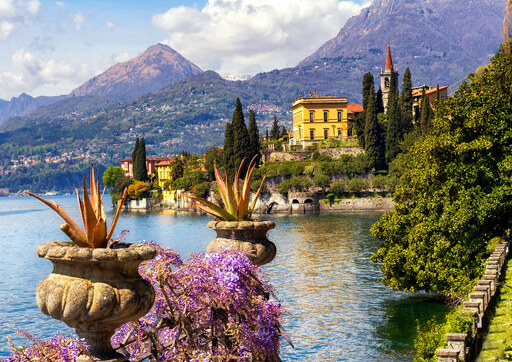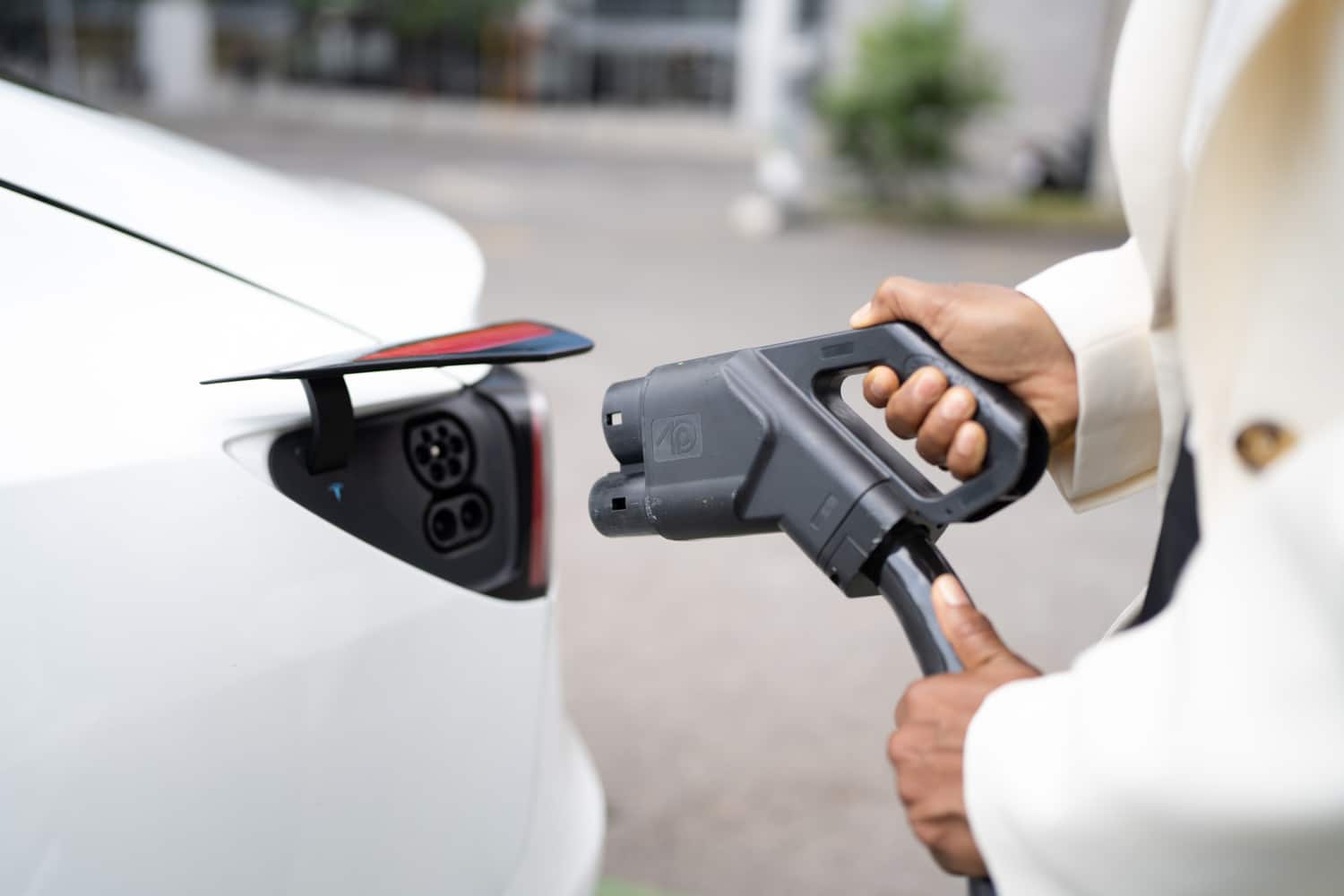It is an extraordinary itinerary that we decide to take by electric car to Lake Como, starting from Milan, and which then stretches along the southern shores of the splendid basin of water, reaching the other great southern centre of the splendid pre-Alpine stretch of water, Lecco. An itinerary of art and colours, landscapes and waters, mountains and hills.
Day 1: Milano
It is in greater Milan that our route to the Lario begins. For car recharging in the Lombard capital, we are spoilt for choice. We decide to head for the column in Piazza della Repubblica, located in the northern part of the city. We dedicate the morning to the Lombard capital, taking a long walk around the city centre. From the La Scala theatre to the Duomo, it is the elegant scenery of the Galleria Vittorio Emanuele II that enraptures our gaze as Milan, all around us, races by.
We stop for an aperitif in the gallery and set off again for Castello Sforzesco and Parco Sempione, the city’s green lung. We have lunch in one of the restaurants in the centre of the Milanese capital where we taste a classic of the local cuisine, the cotoletta alla Milanese with baked potatoes, ending with a lemon sorbet.
The famous Brera Art Gallery
We dedicate the Milanese afternoon to the Pinacoteca di Brera, a gallery of ancient and modern art where some of Italy’s most famous painting collections are on display. A succession of masterpieces from different schools, from Lombard to Tuscan, from Venetian to central Italian and important paintings from the Flemish school. Leaving Brera, we again reach Piazza della Repubblica. With the car loaded we set off for nearby Monza. Dinner with a platter of Lombardy cold cuts and a good dish of rice with porcini mushrooms and saffron.
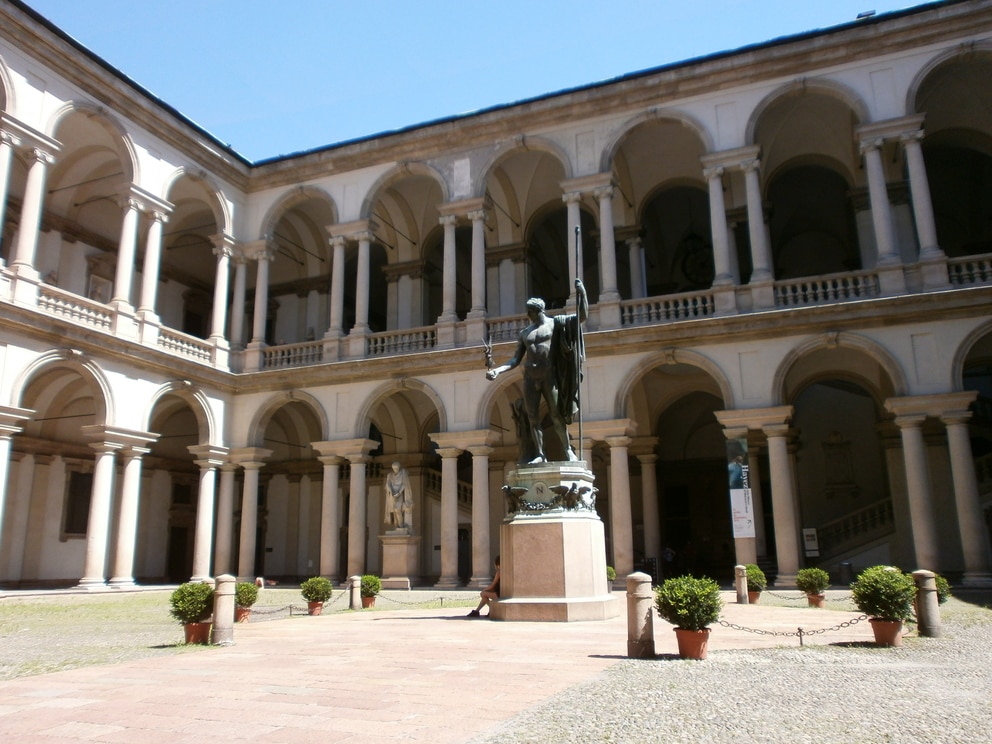
Day 2: Monza
We dedicate the morning to the historical centre of Monza. A treasure not to be missed is the Duomo complex, the minor basilica of St John the Baptist, with its splendid Gothic façade, which houses the Iron Crown, an ancient crown that for centuries was used for the consecration of numerous sovereigns including the Kings of Italy. An authentic masterpiece of international Gothic art is the cycle of wall paintings dating from 1444 in the Zavattari chapel, 45 scenes depicting the history of Queen Theodolinda.
Another must-see in the historical centre is the Palazzo dell’Arengario, the old town hall, overlooking Piazza Roma, the nerve centre of the city. Also worth seeing are the towers of Monza, the Longobard tower, the tower of Teodolinda and the Visconti tower. Lunch with a classic of Brianza cuisine, cassoeula, a hearty dish prepared with Savoy cabbage and the less noble parts of the pig, which we enjoy with polenta.
The Royal Villa of Monza
For the afternoon, we move on to the Villa Reale, a grandiose Neoclassical architectural complex built by the Habsburgs during Austrian rule in the 18th century. We spend a few hours in the open air, enjoying one of the largest enclosed parks in Europe, established in 1805 at the behest of Emperor Napoleon with the aim of making it a model agricultural estate and hunting reserve. A paradise among many varieties of plants where we find peace and relaxation. For dinner we indulge in the typical Monza dish, risotto with luganega, prepared with sausage and saffron.

Day 3: Cantù and Como
We leave beautiful Monza to continue towards the Lario. On our way to Como is the small town of Cantù, already in the Como area, where we stop to visit the Romanesque prepositural basilica of San Paolo, located in a dominant position on the hill overlooking the town, built towards the end of the 11th century.
We set off again towards Como, which we reach in just over half an hour. Although we have travelled a little over eighty kilometres since the start of the itinerary, we prefer to recharge our car at the charging station in Viale Aldo Moro. We leave the car and look for a restaurant where we can have lunch. We enjoy some local cured meats and cheeses and a plate of spaghetti alla carbonara di lago.
The elegant Como
It is to the visit of the beautiful and elegant Como that we dedicate the afternoon. Rich in shops and boutiques, the city also offers interesting itineraries for those who love to shop. We try not to miss the best of the capital of the Lario, an authentic treasure trove of art and culture, but also a lively social hub at the southern end of the lake. City of Alessandro Volta, whose greatness is celebrated in one of its most elegant squares with a monument, Como is a constant surprise.
Splendid is the cathedral of Santa Maria Assunta, built over three and a half centuries, where several styles overlap, although the dominant one is definitely the original late Gothic-Renaissance. The beautiful exterior is complemented by the three-nave, cross-vaulted interior, which houses 16th and 17th-century tapestries made in Florence, Antwerp and Ferrara, as well as 16th-century paintings by Gaudenzio Ferrari and Bernardino Luini.
Also not to be missed in the heart of Como are the basilica of San Fedele, dating back to 1120, which houses interesting Lombard frescoes from the 17th and 18th centuries, and the Broletto, dating back to 1125, the seat of the municipality in medieval times. Picturesque parlours where we pause enchanted by the many views are Piazza Duomo and Piazza San Fedele, and then resume our walk through the intricate tangle of streets in the centre. We dine on other local specialities, including carp fish from the lake and a risotto with perch, which we accompany with a cool local white wine.
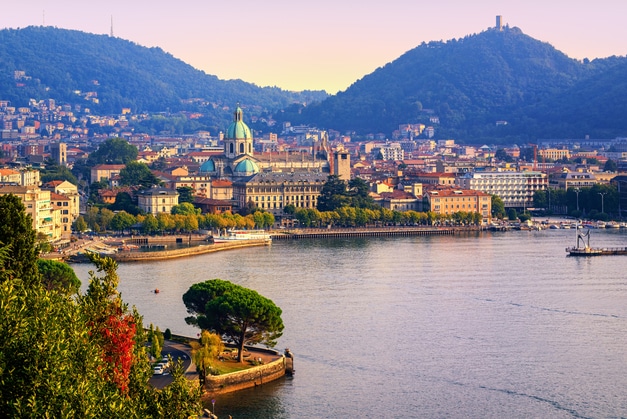
Day 4: Torno, Nesso and Bellagio
We leave beautiful Como after a stroll along its lakeside promenade, with a view of the Volta Temple, built in 1927 for the centenary of Alessandro Volta’s death, and with the car loaded we skirt the waters of the lake until we reach the village of Torno, along the road that leads to the heart of the Lario, to Bellagio. Our gaze runs to the other side of the lake, where we find Cernobbio and Moltrasio. We stop in Torno, a picturesque village a few kilometres from the main town, which from the 13th to the 16th century was the site of an important textile business producing tapestries and pannilani, which were also exported to the heart of Europe. The heart of the village is beautiful, with its characteristic small port, square and Romanesque parish church of Santa Tecla. From the small harbour, a dense network of alleys leads up to the upper part of the village, from where there are unique views of the lake.
We leave the delightful centre of Torno to continue northwards. We pass through Pognana Lario, once a famous centre for the moltrasina stone quarries, and continue on to Nesso, with a village clinging to the mountain slope and crossed by a waterfall that cascades into a scenic gorge. The view of the lake below is extraordinary. We set off again for the heart of the lake, which we reach for lunch. As soon as we arrive at the beautiful Bellagio we sit down to enjoy a good fish soup.
The magic of Bellagio
We enjoy what is known as the ‘pearl of the Lario’. Undoubtedly Bellagio is the most exclusive resort on Lake Como, with its splendid hotels, refined restaurants, and villas, from Villa Serbelloni, with its sumptuous Italian-style gardens, grottoes and statues, to Villa Melzi, in Neoclassical style, with its splendid park, decorated with statues and exotic plants.
A riot of beauty accompanies us on the long walk to discover Bellagio, amidst the shops, colourful alleyways, flights of steps, views of the lake and the busy bustle of ferries and motorboats. Also worth seeing is the 12th-century basilica of San Giacomo in the heart of the town. Dinner with polenta and lake fish, before an evening stroll through the alleys of the village.
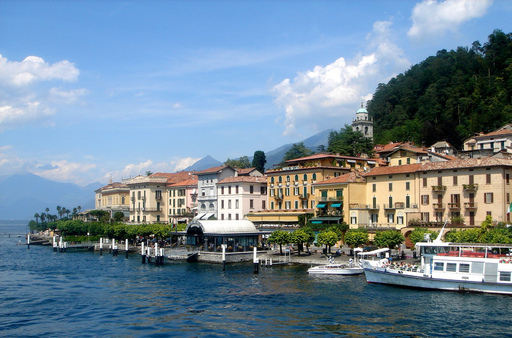
Day 5: Menaggio, Varenna and Lecco
Two more enchanting villages in the heart of the Lario are the morning’s destination. First Menaggio then Varenna, are the two wonders of the morning, which we reach by ferry. Beautiful Menaggio, one of the most picturesque places in the area, with the splendid parks of its sumptuous villas. In Menaggio we visit the historic centre full of bars and shops where we can do some shopping, as well as see the Church of Santo Stefano, which houses interesting paintings from the 16th and 17th centuries.
The second stop of the morning is the scenic Varenna, an ancient fishing village situated on a promontory at the mouth of the Esino stream. With its historic core retaining its medieval structure, Varenna is one of the most evocative and colourful places on Lake Como, where you can see the 14th century church of San Giorgio. Back on the shore of Bellagio, we lunch on fried lake fish.
Lecco and his history
We leave Bellagio by taking the car and driving along the picturesque and scenic road from the heart of the lake to Lecco, another large town in the area. Along the way, the gaze is caught by enchanting beaches caressed by crystal-clear waters. Lecco is dominated by mountains and welcomes us at the end of the other southern branch of the lake. It is the other capital of the Lario, a land with a strong industrial tradition, a city that has always attracted scientists, men of letters and painters, including Leonardo Da Vinci, Stendhal and, most of all, that Alessandro Manzoni who lived here until his adolescence, in the Caleotto district, and set his most famous work, ‘I promessi sposi’ (The Betrothed).
A stroll along Lecco’s lakeside promenade and a visit to the old town centre are a must in this industrious Lombard city: among the architectural highlights to be seen are the sanctuary of Nostra Signora della Vittoria, with its exterior characterised by granite cladding alternating with white stone from the Chiavenna valley, the church of Santa Marta, with fine Baroque decorations inside, and the basilica of San Nicolò, the city’s main place of worship in the shadow of the Resegone. It can only be with missoltini with polenta the dinner of the last day of this holiday between Milan and Lake Como, between history and unforgettable postcard landscapes.






